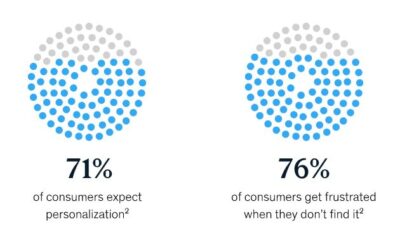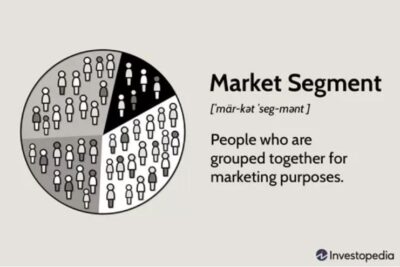4 Things to Do with Your Salesforce Customer Data
In John Krakauer’s book Into the Wild, he recounts the true story of Chris McCandless, a college student-turned-nomad who abandons civilized life to live in the Alaskan wilderness. McCandless was so committed to his vision that he burned all the cash he owned so it wouldn’t tempt him to turn back.
After all, money is only worthwhile if there’s something to spend it on.
Similarly, your customer data is only valuable if you can do something with it. If you aren’t using Salesforce to put your customer data to use, you might as well be burning it.
In this guide, you’ll learn 4 things you can do with your Salesforce customer data to transform your data into a valuable asset for your company.
Personalized Marketing
Regulars at diners and coffee shops feel appreciated when their server remembers their name and usual order. Great customer service in the food industry includes getting to know customers, asking about their lives, remembering conversations, and making them feel listened to.
In the digital world, those same principles apply: customers enjoy receiving personalized communication. In a world that was already quickly moving towards digitization, COVID-19 drastically shifted the landscape of business. Consumers who used to expect personalized service from baristas and hairdressers had to suddenly turn to digital platforms to fill those social needs—a trend that has continued into the present and will carry into the future.
Expectations have moved from the real world into the digital realm, and this large shift towards digital-first businesses has upended the marketing strategies. Consumers don’t just respond to personalized marketing—they expect it.
Seventy-one percent of customers expect to receive personalized communication, and 76% get frustrated when they don’t receive it.
Salesforce customer data gives marketers a valuable new tool: the power to reach customers with personalized messages and campaigns tailored to the needs of individual consumers.

Discover Market Segments
Who is Nike’s market?
Is it athletes? Parents? Men? Women? Children? Seniors? Americans? Collectors?
In reality, Nike’s market includes all those categories and many more. When designing marketing campaigns, Nike must consider all of these types of consumers, but not every communication reaches the same audience in the same way.
For example, a billboard is equally likely to reach anybody who travels by it, so marketers can take the geographical location of the sign into account when designing the message. Television ads will reach viewers of the channel. Co-branded campaigns will reach consumers of both brands. But when it comes to digital advertising, a whole new world of opportunities opens up.
By using consumer data, Marketers can serve digital advertisements to more and more specific market segments. For example, they can deliver advertisements for women’s tennis shoes to consumers who have previously indicated that they are women, back-to-school sales to consumers who have indicated that they’re parents or Spanish-language advertisements to consumers who have selected Spanish as a communication preference.
You can collect this data in various ways—when using advertising platforms like Facebook or Google Ads, marketers can target demographics based on the data Facebook or Google already has regarding their consumers. When using mail, email, or other types of direct advertising, you can use the data collected with first-party cookies, survey responses, or information the customer provided when they created an account.
However, Salesforce customer data creates a new opportunity for marketers: discovering new market segments. Salesforce has powerful analytics tools like Einstein AI that assists marketers with qualifying leads, recognizing trends, and targeting communications to the most effective market segments.
One of the key ways you can do this is by using A/B testing to see what kinds of messages are most effective for different market segments. The digital revolution has added a new level of complexity to marketing, but this complication doesn’t have to make marketing more difficult. This complexity can make marketing easier and more effective than ever in conjunction with Salesforce’s powerful suite of tools.

Re-engage with Leads
Customer A created an account on your website. They watched a demo and engaged with your customer-service chatbot to ask some questions. They downloaded a free trial of your product and used it for the trial period.
That was 6 months ago.
If you’re waiting for them to reach out again, there’s a chance that you might still win their business, but it completely depends on them to follow up. Wouldn’t it be great if you could re-ignite the spark, or at least find out if they have any questions?
That’s how Salesforce customer data can help. Customer data allows marketers to re-engage with leads based on their history and the length of time since pre-defined milestones. For example, you can use customer data within Salesforce to follow up with customers who requested quotes but didn’t result in sales, with customers who participated in a webinar but never created an account, or with customers who added items to a digital cart but didn’t checkout.
Analyze Salesforce Customer Data
Collecting customer data is difficult, but it won’t do your business any good unless you can analyze it and derive insights from it.
One of the most important features of Salesforce is the 360 view of customer information. This 360 view brings all your customer information together in one place so you can make meaningful insights from a single screen.
Without this powerful tool, your customer information would spread out over all your marketing channels: Google Ads would have some data, your e-commerce platform would have some data, your email list would have some data, your individual salespeople would have some data, etc. With so much of your customer data decentralized, making sense of your data is all but impossible, but with Salesforce, analyzing your customer data from a single centralized source is a breeze.
Rainmaker Salesforce Managed Services
Salesforce is the world’s leading CRM platform because its diverse selection of cloud-based tools helps you put your customer data to the best possible use. Integration with Salesforce’s platform is a top priority for companies, which is why Rainmaker’s Salesforce managed services are essential for any business in the modern age.
Rainmaker helps create marketers create value by leveraging their expertise in Salesforce integration. Rainmaker manages the technical aspects of your Salesforce journey so you can focus on delivering value to your customers.
To learn how Rainmaker can help, schedule a meeting today.






